Joan Oró Telescope | Instrumentation
LAIA and ARES
The TJO is equipped with two instruments:
An imaging camera (LAIA) and a medium resolution spectrograph (ARES). It also has a second imaging camera (MEIA2) as a backup camera.
LAIA
Large Area Imager for Astronomy
The LAIA instrument (Large Area Imager for Astronomy) is the optical imaging camera of the TJO, operational since December 2018. It consists of two components: the CCD camera and the filter wheel. Please read all the information presented here when preparing submissions with the TJO.
CCD camera
Model: CCD230-84
Manufacturer of the sensor: e2v
Sensor type: back-illuminated
Coating: BV
Number of pixels: 4096 x 4096
Pixel size: 15 x 15 um (0.4 x 0.4 arcsec at the TJO)
FOV at the TJO: 30 arcmin
Sensor size: 61.4 x 61.4 mm
Quantum efficiency: >90% from 500 to 650 nm; >50% in all the range from 400 to 850 nm
Typical working temperature: -50ºC
Dark current: <0.01 e-/pixel/sec at -50ºC
Readout noise: <9e- RMS a 1 MHz
Redout channels: 4
Non-linearity: <1%
Readout time: 8 sec
Filter wheel
The filter wheel is physically attached to the telescope, behind the primary mirror mount. It can accommodate up to 12 3-inch filters that are positioned on the optical axis of the telescope using the rotating filter wheel. There are currently 5 Johnson-Cousins photometric filters (manufactured by Custom Scientific) installed: U, B, V, Rc and Ic, 4 Sloan Digitized Sky Survey photometric filters (manufactured by Asahi Spectra): g, r, i and z; and an H-alpha filter (Asahi Spectra).
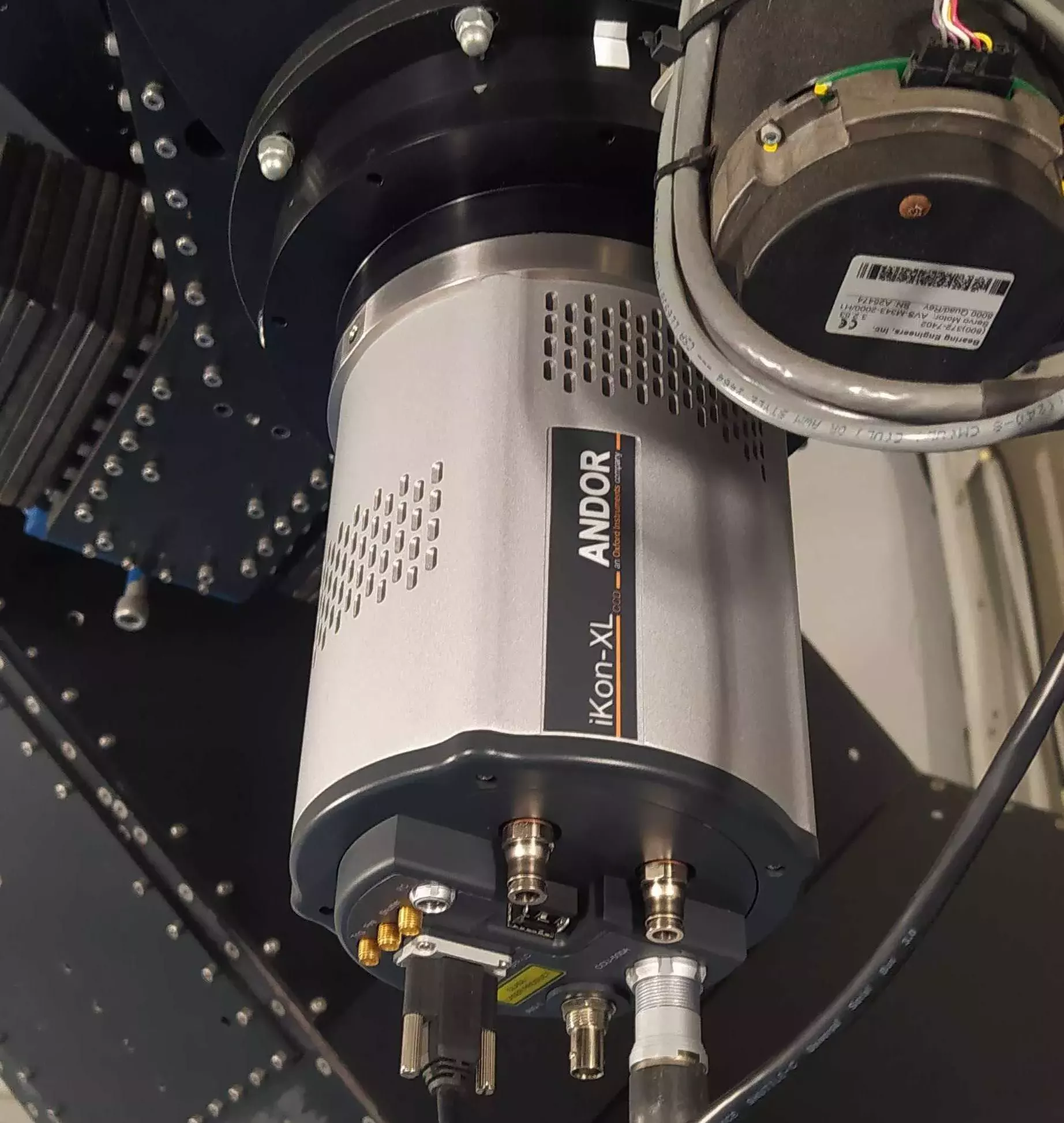
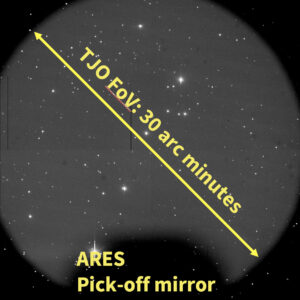
Vignetting
LAIA is designed to cover the entire field of the TJO focal plane. With its 4096 x 4096 pixels, LAIA can cover a head of 27.3 x 27.3 arc minutes. On the other hand, the focal plane covers a circular field of 30 minutes of arc. This causes the edges of the LAIA images to be vignetting. Additionally, the ARES pick-off mirror is also seen in the LAIA field of view with vignetting at the northern end of the field. As a result, the LAIA images will look similar to the one shown below:
Standard calibration procedure
The TJO control system is designed to periodically execute the acquisition of calibration images, including bias, darks and flats:
Bias: They are usually taken in multiples of 5 before the start and at the end of each night. Observers are given a minimum of 10 bias images.
Darks: They are obtained just before or after the bias images. The exposure time of the dark images will correspond to the maximum exposure time of the night science images.
Sky flats: These are routinely taken at the beginning and end of the night under suitable sky lighting conditions. When sky conditions do not permit, observers are provided with the most recent flat images available.
ARES
Astronomical mid-REsolution Spectrograph
The ARES instrument (Astronomical mid-REsolution Spectrograph) is a fibre spectrograph installed in a dedicated room on the ground floor of the TJO building. ARES allows the observation of bright stars with a resolution of R=12000 in two spectral windows centred at 512 nm and 656 nm.
Limiting magnitude: S/N=10 for V=13 mag in 1-hour exposure time
Global transmissivity: >10%
Spectral resolution: R=12000
Two spectral windows: green (from 405 to 530 nm), red (from 630 to 673 nm)
In order to achieve a high global transmissivity (>10%) two telescopes (manufactured by Takahashi) and two VPHs in Littrow configuration are used.
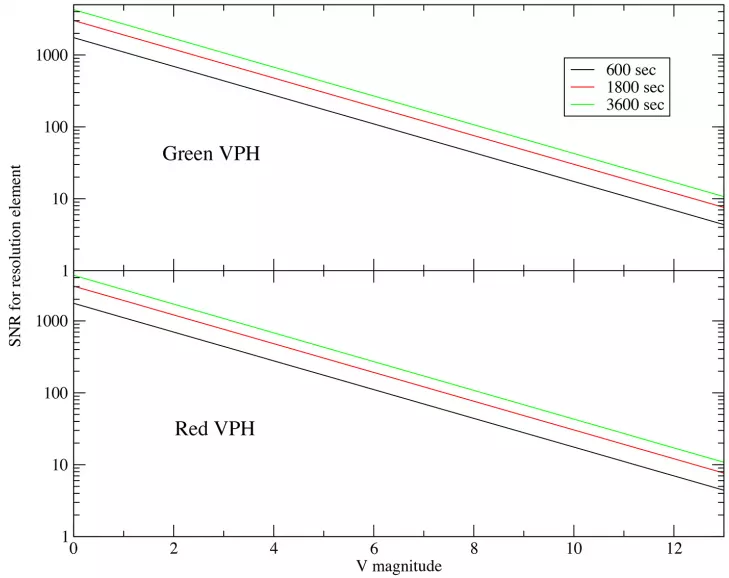
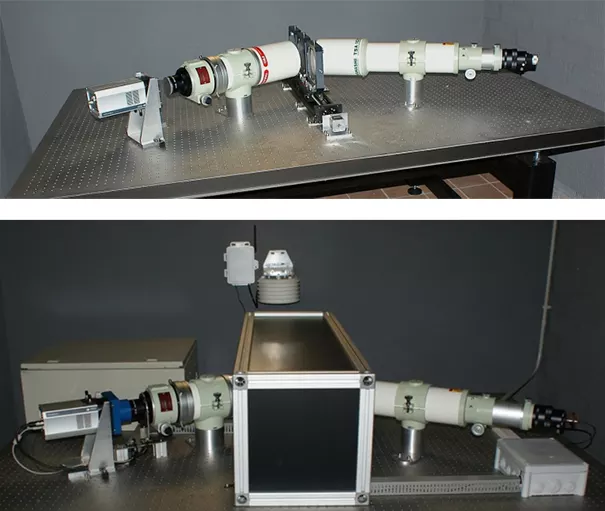
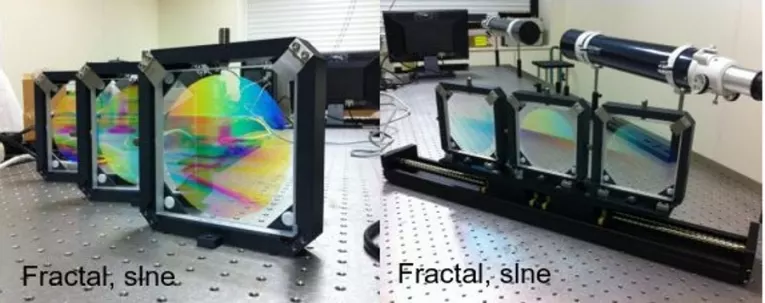
VPHs
The dispersion system of the ARES spectrograph is composed of two VPHs developed by Wasatch Photonics, providing the two spectral windows and maintaining a high transmissivity. Both VPHs are mounted on a rail (prepared to accommodate an additional one) which allows a quick change between them.
Number of pixels: 2048 x 512
Pixel size: 13.5 x 13.5 um
Sensor size: 26.7 x 6.9 mm
Minimum working temperature: -100ºC
Readout noise: 2.8 e-
Dark current: 0.0002 e-/pixel/s
Linearity: better than 99%
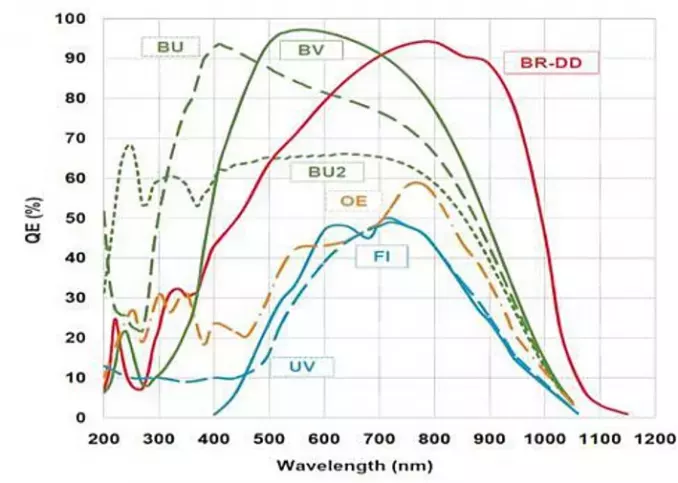

Bias:They are usually taken in multiples of 5 before the start and at the end of each night. Observers are given a minimum of 10 bias images.
Darks: They are obtained just before or after the bias images. The exposure time of the dark images will correspond to the maximum exposure time of the night science images.
Spectroscopic flats: The optimal calibration strategy for ARES is still under evaluation. The main purpose of spectroscopic flats is to trace the position of the spectrum and correct the intra-pixel response. For this reason, 4 options can be studied: direct illumination of the CCD, dome flats, illumination of the fibres with LEDs, and standard stars. The solution that provides the optimal result will be used for the spectra images delivered to the observers.